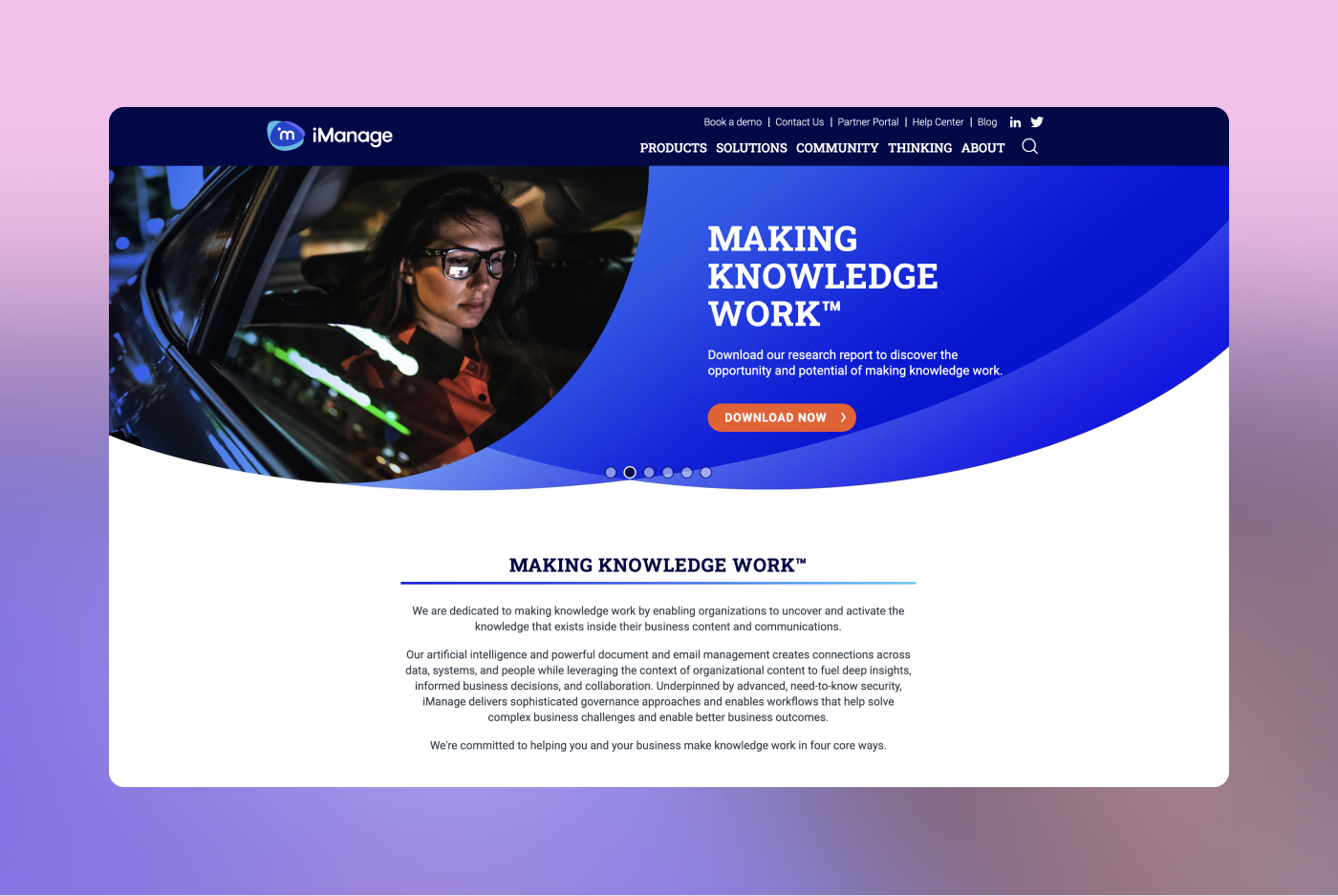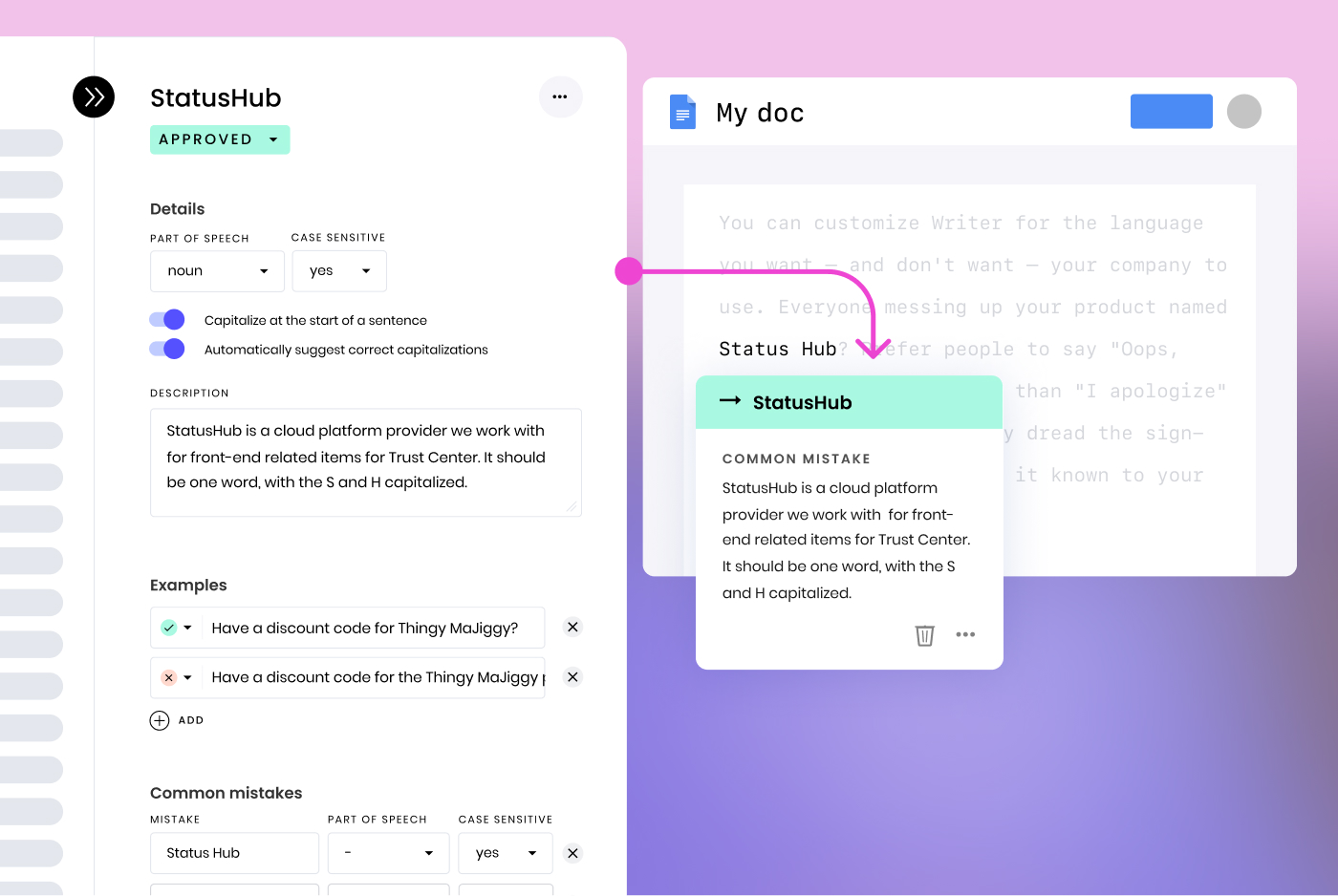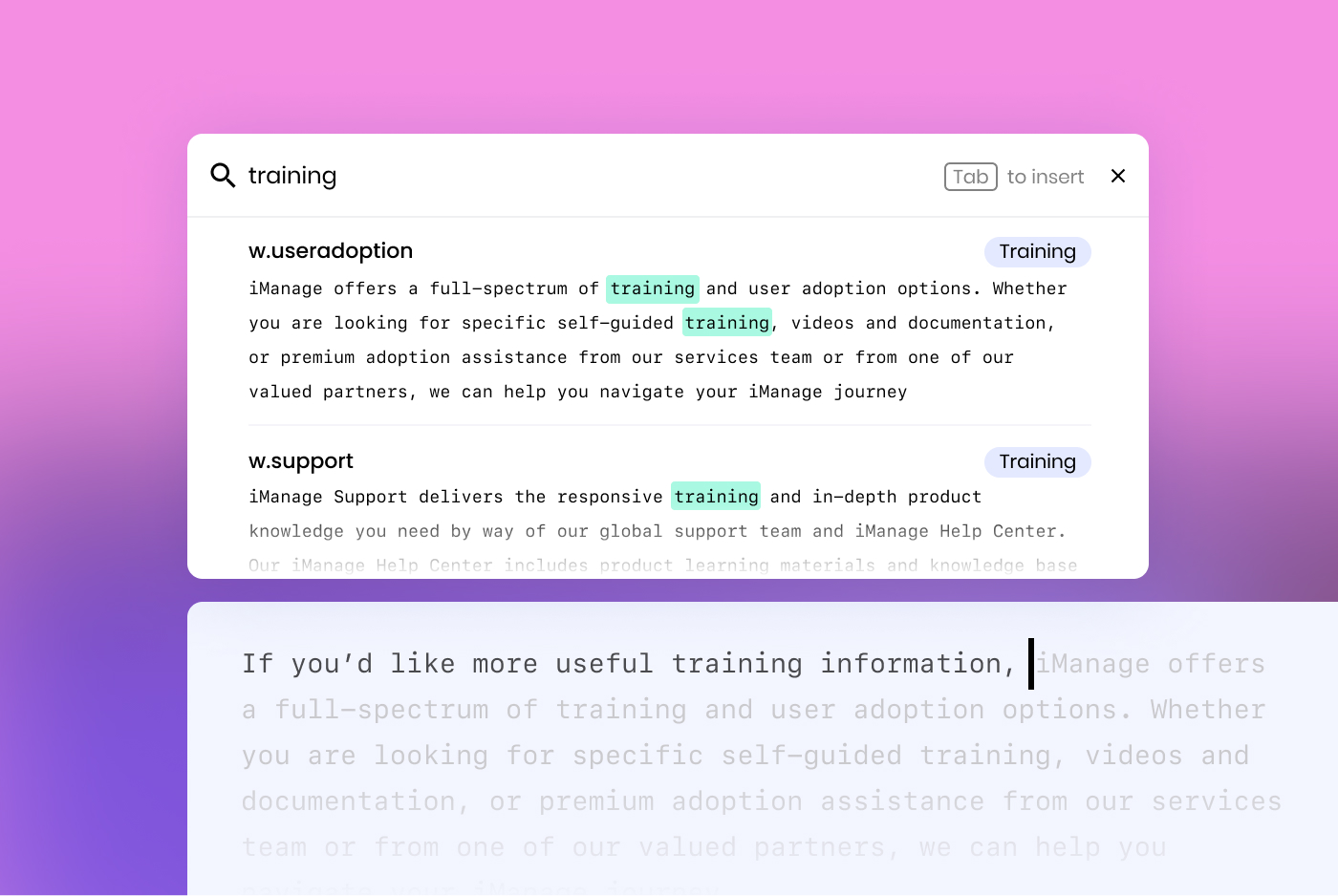- story – 10 min read
- VIDEO – 25 min watch
- AUDIO – 25 min listen
That time Karl from iManage scaled
support output by 400% with WRITER

Listen to iManage’s story or read the edited transcript below
WRITER is the full-stack generative AI platform for enterprises. We make it easy for organizations to adopt AI apps and workflows that deliver quantifiable ROI quickly.
WRITER helps organizations build highly-customized AI apps that compress entire business processes, support complex use cases, and infuse work with company intelligence. Our enterprise-grade platform can be deployed flexibly, keeps your data private, and adheres to global privacy laws and security standards. Leading enterprises choose WRITER, including Vanguard, Intuit, Accenture, and Kenvue.
Karl Gabbey is Director of Support Knowledge Management and leads a 4-person team: Elizabeth Burke (Release Manager), Matt Smith (Content Development Manager), and Alex Cox (Copy Editor). Read or watch the story of how Karl scaled iManage’s critical knowledge management resources, growing his team by 100% and scaling from 200 to 1000+ articles published per year.
The iManage Knowledge Management team uses WRITER to:
- Enable a team of ~20 writers to quickly write and publish content
- Quickly ramp up new writers on iManage’s style guides and content guidelines
- Enable a team-publishing model that helps non-writers produce great content
Scaling knowledge management – from <200 articles to 1000+ per year – how did you do it?
The program originated under our iManage Support team — our Support leader knew that we had an enormous amount of knowledge to harness, not just from Support but from the entire organization.
There were originally just two of us in charge of this effort, and several people across the support team globally, wanting to write articles. For us to get quality content published, we felt the need to review and edit everything before it got published. Before we knew it, we had a backlog of articles to review and publish, which meant that we just weren’t able to scale … and it became a detriment to us, as it started to discourage people who wanted to author and publish material that was relevant to our customers and partners.
Fast-forward to the result — between Zendesk as our new support system and help center as well as WRITER, we now have a team publishing model with a total of 17 writers. We were able to empower subject matter experts who knew this information the best to author and run their own publication. In the last year alone, we had nearly a thousand articles published using the team publishing model — to have eyes on every single one of those articles, of course is impossible.

How did you advocate for your team’s growth — doubling in the span of a year?
I’m very fortunate that our organization values content, proper messaging, and guidance to the field for our customer base, and also for our partner base — it’s essential. Our team is one of several teams that owns content and various types of content. So, across all of our teams, it’s something that we value. It’s a must — a required starting point.
It was the team publishing model that allowed us to justify that 100% growth in our team. We knew the value was already there, as everything that we put out was getting used. But we didn’t have the means for people to just publish when they needed to. The intention was to have quality content published, but without having to have a team of copy editors or a team of writers to backup the whole model.
“It goes without saying that our use of WRITER has catapulted us in this direction.”

Karl Gabbey
Director, Knowledge Management
When did you all start to think about a writing system being part of this scaling stack?
Oftentimes, our copy editor had to give repeat guidance or similar feedback — from basic grammatical type corrections, stylistic rules, and terminology, to rules that otherwise would have gone unnoticed. These elements are critical — critical from both an accuracy perspective, but also from a readability and clarity perspective. And, of course, for branding, to make sure that the things we produce fall in line with what our organization’s goals are.
All of this made it very easy for us to say that a tool like WRITER is exactly what we need. It empowers our authors to get corrections on the fly, to know if they’ve used a term incorrectly or just used the wrong term. And it doesn’t require them to remember all of these rules. It doesn’t require them to look them up in a very large style guide — especially as someone who is doing this as a second part of their job, it’s a lot to remember to go and look up the rules or to even know that rules exist.
What was especially important was incorporating our own terminology catalog that we could always give people guidance on…they no longer had to remember the difference between term A or term B. It was just built into the tool.

How did you get budget for WRITER?
The biggest qualifier for us was that we had just added two new people to a team that had only been made up of two people to begin with. We already increased the number of resources we had available on our team, and we had specialized resources, which was great for us. To look ahead and to say, let’s do that again next year or the year after — it’s not to say that it’s not going to be necessary, especially as our needs grow…but more often than not, it also benefits the team to not have to worry about coming to us every single time to ask questions. Or even coming to us in the first place just because the issue wasn’t known.
WRITER gave us that person we needed in a future resource request… looking at the cost of adding more people to the team versus adding a tool. Having something in place that makes it easier for those who are putting in the time to write, to do their own editing or peer reviews and not have to worry about going back to that backlog model or that constant review-and-edit model.
“In the last year alone, we had nearly a thousand articles published. …To be able to have eyes on every single one of those articles, of course is impossible.”

Karl Gabbey
Director, Knowledge Management
What would you have done differently as you were scaling?
I think without a doubt, a tool like WRITER — had we had this even before team publishing became a success for us — would have made a world of a difference, as you’re giving the person power to see for themselves without even having to talk to anybody.
I think the other one is just recognizing the value in different types of roles. We are only four people being able to bring a program like this to scale and actually have it result in success is just a matter of making sure you have the right roles. And it’s one thing when you have two people who can manage various roles and it’s another, when you have, even if you just have four people versus two who have specialized roles to be able to run with certain aspects of your teams.
With some really foundational challenges solved, what’s next ahead for you; what are the things that keep you up now?
We have to make sure we have a very seamless experience for our customers, for our partners to be able to get access to the information they need and know what resources are available. We don’t want them to have to memorize the flurry of a list of resources that we have available to them.
But rather, where do they access a particular resource? Whether it’s something that is support driven and or something that comes to our public sites, like iManage.com or docs.imanage.com, that they will be led ultimately to where they need to go, the answer that they need. And that’s the most important thing — it’s relatively easy. I mean, of course not really, but relatively easy to produce a number of excellent resources — it’s another to make sure that they’re in the right place for someone to get to without having to go through a massive effort.
What do you think knowledge management is going to look like in five years?
It’s very easy from a content perspective for all of us to say, we need to just publish a bunch of materials or we need to create this new site that gives these specific answers. But meanwhile, it’s been up to the other side to find what they are looking for. You want the experience to be like going to their favorite search engine — finding the answer quickly and painlessly. And so one big focus will be ease of access: not having to put a lot of effort into finding the answer that you need. The other is, when you’re there, being able to reuse that answer: how can I share this with my colleagues and make it more widespread knowledge?

